Let me tell you, there's nothing quite like the smell of slow-cooked roast pork wafting through the house. It's pure comfort food, a dish that always brings a smile to my face (and a rumble to my stomach!). I've been making roast pork for years, and over time, I've perfected my technique. Now, I'm ready to share it with you!
This recipe is all about simplicity and letting the slow cooker do its magic. The result is melt-in-your-mouth pork that's so tender, it practically falls apart. It's perfect for a Sunday lunch, a mid-week treat, or a hearty dinner party. You can even make it ahead of time and reheat it – the flavour only gets better with age!
So, grab your ingredients, put on your apron, and let's get cooking! This is going to be a good one.
(Part 1) choosing the right cut of Pork
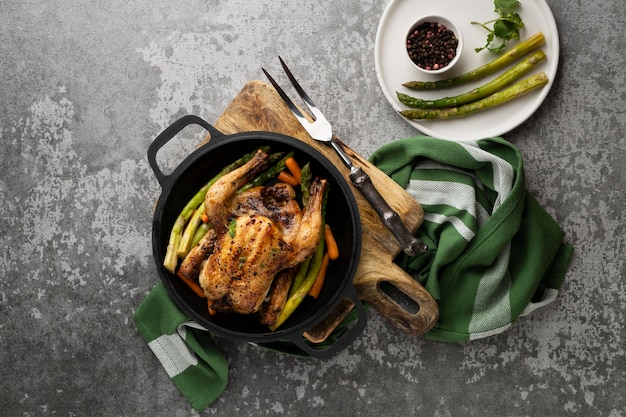
The first step to a perfect roast pork is choosing the right cut. You want a cut that's going to be tender and juicy after hours of slow cooking. My personal favourite is a pork shoulder. It's a relatively inexpensive cut, but it packs a lot of flavour and gets incredibly tender when cooked low and slow.
Why Pork Shoulder Reigns Supreme
Pork shoulder is a real workhorse of a cut. It's full of flavour and, when cooked low and slow, it becomes incredibly tender. The fat content in pork shoulder also helps to keep it moist and juicy. You can get a pork shoulder with the bone in or bone-out. I prefer to cook it bone-in, as I find that it adds an extra layer of flavour, but it's up to you!
Imagine this: you pull the pork apart, and the bone just slides right out, leaving behind a pile of succulent, juicy meat. It's a satisfying experience, and it's a testament to the power of slow cooking.
Alternatives to Pork Shoulder
While pork shoulder is my go-to, there are other cuts that work well for slow-cooked roast pork:
- Pork butt: This is technically the top part of the shoulder, but it's often referred to as "butt" in the US. It's a leaner cut than shoulder, but it still cooks up beautifully in the slow cooker.
- pork loin: A leaner and more tender cut that's great for roasting. You can cook it whole, or you can cut it into chops and slow cook them. Be mindful that loin tends to be a bit drier than shoulder, so you might need to add a little extra liquid to the slow cooker to keep it moist.
No matter which cut you choose, make sure it's fresh and of good quality. You'll taste the difference!
(Part 2) Preparing the Pork: A Symphony of Flavors
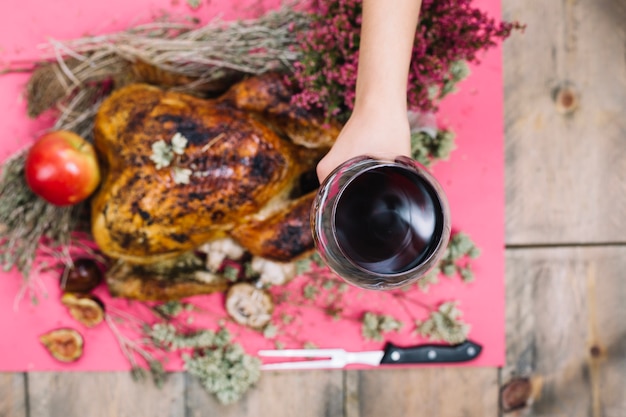
Now that you've got your cut of pork, it's time to prepare it for slow cooking. This part is actually quite straightforward. I like to keep things simple, but you can add your own personal touches to this step.
The Salt and Pepper Foundation
Start by seasoning your pork liberally with salt and pepper. This might seem basic, but it really makes a difference. Salt draws out moisture and helps to tenderize the meat. You can use any kind of salt you like, but I prefer to use a coarse sea salt. It adds a bit of crunch and a touch of minerality to the dish. Remember, the goal is to create a flavorful crust that compliments the tender meat.
Spicing It Up: Unleash Your Creativity
Next, I like to rub the pork with a bit of garlic powder and onion powder. This adds a delicious depth of flavour and aroma to the meat. You can also add other spices, like paprika, cumin, or chili powder, depending on your taste.
For a more complex flavour profile, try a spice blend like a "jerk spice" mix, which includes a blend of allspice, scotch bonnet pepper, thyme, and other aromatic spices. Or, if you prefer a smoky flavour, try a blend of smoked paprika, chipotle powder, and cumin.
Searing for Depth
If you want to add a bit of smokiness to your roast pork, I recommend giving it a quick sear in a hot pan. This will help to develop the Maillard reaction, which gives the meat a crispy brown crust. Be careful not to overcook it though; you just want to get a nice sear on the outside. If you choose to sear, be sure to remove any excess fat or juices from the pan before placing it in your slow cooker.
The sear isn't essential, but it adds a nice layer of flavour and texture. If you're short on time, you can skip this step without sacrificing too much flavour.
(Part 3) The Slow Cooker Magic: A Symphony of Aromas
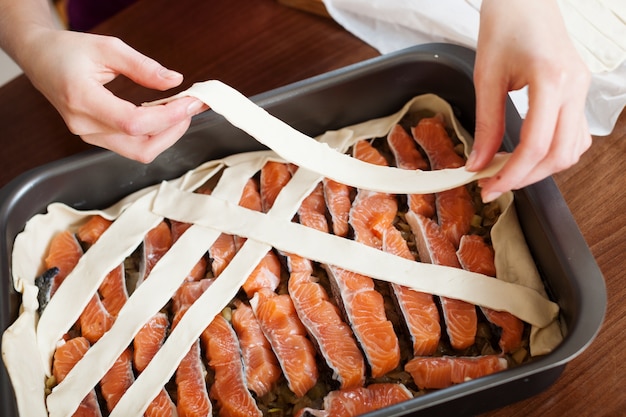
Now it's time for the slow cooker to work its magic.
Creating a Flavorful Base
I like to place my pork in the slow cooker on top of a bed of chopped onions and carrots. The vegetables not only add flavour to the meat, but they also release their juices, creating a delicious sauce. You can use whatever vegetables you like, but I find that onions and carrots make a great base.
Think of this as a base layer of flavor that will meld with the pork and juices as it cooks. You can experiment with different vegetables based on your preferences. For a more earthy flavour, try adding celery or parsnips. For a sweeter touch, try adding apples or pears.
A Touch of Bacon for Added Depth
If you have a piece of bacon on hand, chop it up and add it to the bottom of the slow cooker as well. The bacon will add a smoky depth to the sauce. The bacon fat will render during cooking, adding even more richness to the dish.
Liquid for Juicy Perfection
Once the pork is in the slow cooker, add about a cup of liquid. This could be chicken broth, beef broth, apple cider, or even beer. The liquid helps to keep the meat moist and prevents it from drying out during the long cooking process.
Choose a liquid that complements the flavours you've already added. For a classic pork roast, chicken broth or beef broth are great choices. If you're looking for a sweeter flavour, apple cider or beer are excellent options. You can also get creative and use a combination of liquids, like chicken broth and apple cider.
Slow Cooker Settings for Success
Now, cover the slow cooker and cook the pork on low for 6-8 hours, or on high for 4-6 hours.
Don't worry if you have a smaller slow cooker, you can still make a delicious roast pork. Just make sure the cut you choose fits comfortably in the crockpot, and be sure to adjust the cooking time accordingly.
The slow cooker will do the rest. While it's working its magic, you can relax and enjoy the aroma of slow-cooked pork that fills your home.
(Part 4) Checking for Doneness and Making the Gravy: The Final Touches
After several hours, your house will be filled with the enticing aroma of roast pork. Now is the time to check the doneness of the pork.
The Importance of a meat thermometer
The best way to check for doneness is to use a meat thermometer. Insert the thermometer into the thickest part of the meat, making sure you don't touch the bone. The pork is cooked through when the internal temperature reaches 145 degrees Fahrenheit (63 degrees Celsius). If you don't have a meat thermometer, you can test the pork by piercing it with a fork. The juices should run clear, and the meat should be easily shredded.
Don't overcook the pork, or it will become dry and tough. The meat thermometer is your best friend, ensuring that the pork is cooked to perfection.
Transforming Juices into Delicious Gravy
Once the pork is cooked, remove it from the slow cooker and let it rest for about 10 minutes. While the pork rests, you can make a delicious gravy from the juices in the slow cooker.
Simply transfer the juices to a saucepan and bring them to a boil. Reduce the heat and simmer for a few minutes, or until the gravy thickens slightly. You can add a tablespoon of cornstarch to the gravy to help it thicken. If you need to, you can also add a little more liquid, like broth or water, until it reaches your desired consistency.
The gravy is what really elevates this dish. It's rich, flavorful, and complements the tender pork perfectly. If you're feeling adventurous, you can add a splash of wine or a tablespoon of Dijon mustard to the gravy for extra flavour.
(Part 5) Serving Your Pork Feast: A Culinary Celebration
Now comes the fun part - serving up your delicious roast pork!
Shredding for Tenderness
The pork will be so tender that it will practically fall apart. Use two forks to shred the pork into small pieces. If you prefer, you can slice it with a sharp knife.
The shredded pork is perfect for sandwiches, tacos, or even salads. If you prefer, you can slice the pork and serve it with gravy and sides.
A Culinary Symphony of Flavors
Once the pork is shredded or sliced, serve it with the gravy and your choice of sides. I like to serve mine with mashed potatoes, roasted vegetables, or a simple green salad.
You can also add a touch of sweetness with applesauce or cranberry sauce. And if you like a bit of crunch, you can also add some crispy fried onions or crackling.
The possibilities are endless! You can create a symphony of flavours to satisfy your cravings. Let your creativity flow and enjoy a culinary masterpiece.
Leftovers: A Delicious Second Act
There's always a bit of leftover roast pork, and that's a good thing! You can enjoy it for lunch or dinner the next day. It's also great for sandwiches, tacos, or even pizza toppings.
You can store the leftover pork in the refrigerator for up to 4 days. You can also freeze it for later use. To freeze, wrap the cooked pork tightly in plastic wrap and then in aluminum foil. When ready to use, thaw the pork in the refrigerator overnight.
There's nothing quite as satisfying as knowing you have a delicious leftover meal waiting for you in the fridge!
(Part 6) Recipe Variations: A World of Flavors
This slow cooker roast pork recipe is a great starting point, but it's also very versatile. Here are a few variations you can try:
A Tangy Twist
For a tangy twist, try adding a tablespoon of apple cider vinegar to the slow cooker. The vinegar will help to tenderize the meat and add a bright, acidic note. This is a great way to cut through the richness of the pork and add a refreshing element.
Sweet and Savory
For a sweet and savoury flavour, add a tablespoon of brown sugar to the slow cooker. The sugar will caramelize during the cooking process, giving the pork a rich, sweet flavour. This is a classic combination that works well with pork.
Spicy Sensation
For a spicy kick, add a teaspoon of cayenne pepper to the slow cooker. You can also add other spices, such as smoked paprika, chipotle powder, or chili powder. Be mindful of the heat level and add more or less spice depending on your preference.
A Touch of Citrus
To add a touch of citrus, add a tablespoon of orange or lemon juice to the slow cooker. This will brighten up the flavour of the pork and add a refreshing touch. Citrus pairs well with pork and creates a harmonious flavour profile.
These are just a few ideas to get you started. Feel free to experiment and create your own unique variations. The beauty of this recipe is that it's open to your personal touch.
(Part 7) Tips for Slow Cooker Success: Mastering the Technique
Here are a few tips to ensure your slow cooker roast pork turns out perfectly:
Don't Overcrowd the Slow Cooker
Make sure there is enough space in the slow cooker for the pork to cook evenly. If the pork is too crowded, it won't cook properly and might become dry. Allow ample space for the pork to cook and for the juices to circulate.
Use a High-Quality Slow Cooker
A good-quality slow cooker will help to ensure that your pork cooks evenly. Look for a slow cooker with a ceramic insert and a good temperature control. Investing in a good slow cooker will pay off in the long run, as it will ensure consistent results and last for years.
Don't Open the Lid Too Often
Resist the temptation to open the slow cooker lid too often. Every time you open the lid, you release heat and moisture, which can slow down the cooking process. Try to avoid opening the lid unless absolutely necessary. Let the slow cooker work its magic!
With these tips in mind, you'll be on your way to mastering the art of slow cooker roast pork.
(Part 8) Slow Cooker Roast Pork: A culinary journey
Slow cooker roast pork is a dish that is both delicious and easy to make. It's a great option for a busy weeknight or a relaxed weekend meal. The slow cooking process ensures that the meat is tender and juicy, and the flavours have time to meld together.
It's a dish that brings people together. The aroma of slow-cooked pork is irresistible, and it creates a sense of warmth and comfort. It's a reminder that good food brings people together and creates lasting memories.
So, next time you're looking for a comforting and flavourful meal, give this slow cooker roast pork recipe a try. You won't be disappointed!
FAQs
1. How long can I keep slow cooker roast pork in the fridge?
You can keep slow cooker roast pork in the refrigerator for up to 4 days. Be sure to store it in an airtight container or wrap it tightly in plastic wrap. This ensures that the pork stays fresh and doesn't dry out.
2. Can I freeze slow cooker roast pork?
Yes, you can freeze slow cooker roast pork for up to 3 months. To freeze, wrap the cooked pork tightly in plastic wrap and then in aluminum foil. This will prevent freezer burn and help to preserve the flavour. When ready to use, thaw the pork in the refrigerator overnight. You can also thaw it in the microwave, but be sure to cook it thoroughly before serving.
3. Can I make slow cooker roast pork ahead of time?
Absolutely! Slow cooker roast pork is perfect for making ahead of time. You can cook the pork and then store it in the refrigerator for up to 4 days. When you're ready to eat, simply reheat the pork in the oven or in a microwave. This is a great option for busy weekdays or when you want to have a delicious meal ready to go.
4. What are some good sides to serve with slow cooker roast pork?
There are many delicious sides that go well with slow cooker roast pork. Some popular options include mashed potatoes, roasted vegetables, stuffing, apple sauce, and cranberry sauce. You can also serve it with a simple green salad or a side of bread. The key is to choose sides that complement the flavours of the pork and create a well-balanced meal.
5. Can I use a different kind of meat for this recipe?
While pork shoulder is the classic choice for slow cooker roast pork, you can use other cuts of meat, such as beef chuck roast or chicken thighs. Just adjust the cooking time accordingly. Beef chuck roast is a good alternative for those who prefer a beefy flavor, while chicken thighs are a lighter option. Just be sure to adjust the cooking time and liquid amount based on the type of meat you choose.
With these tips and variations, you'll be a slow cooker roast pork master in no time! Enjoy!
| Ingredient | Quantity |
|---|---|
| Pork shoulder (bone-in or bone-out) | 3-4 pounds |
| Salt | To taste |
| Black pepper | To taste |
| Garlic powder | 1 teaspoon |
| Onion powder | 1 teaspoon |
| Chopped onions | 1 cup |
| Chopped carrots | 1 cup |
| Bacon (optional) | 4-5 slices |
| Chicken broth or beef broth | 1 cup |
Everyone is watching

The Ultimate Guide to Cooking Sweet Potatoes: From Roasting to Mashing
RecipesSweet potatoes. Just the name conjures up images of warm, comforting dishes, bursts of vibrant color, and a to...
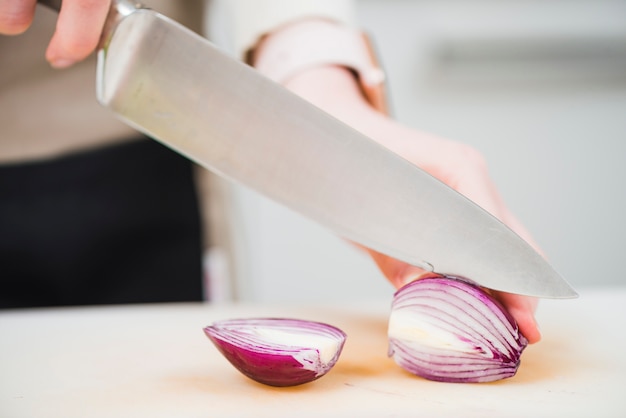
Caramelized Onions: The Ultimate Guide to Sweet, Savory Perfection
RecipesAh, caramelized onions. Those gloriously sweet, sticky, and utterly addictive little gems. They're the culinar...
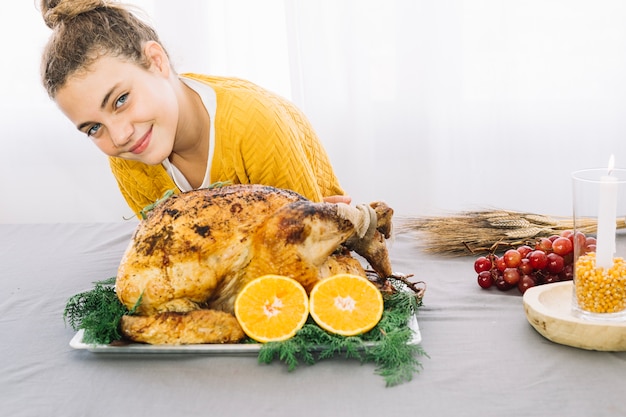
Ultimate Turkey Cooking Time Guide: From Raw to Perfectly Roasted
RecipesAh, the turkey. A symbol of festive gatherings, a culinary challenge, and a source of delicious leftovers. But...

Wolf Meat Recipes: A Guide to Cooking Wild Game
RecipesLet's be honest, you don't see wolf meat at your local butcher shop every day. It's a bit of a wild card, but ...

Pigs in a Blanket Cooking Time: How Long to Bake for Perfect Results
RecipesAh, pigs in a blanket. Just the name conjures up images of those delightful little parcels of crispy pastry en...
